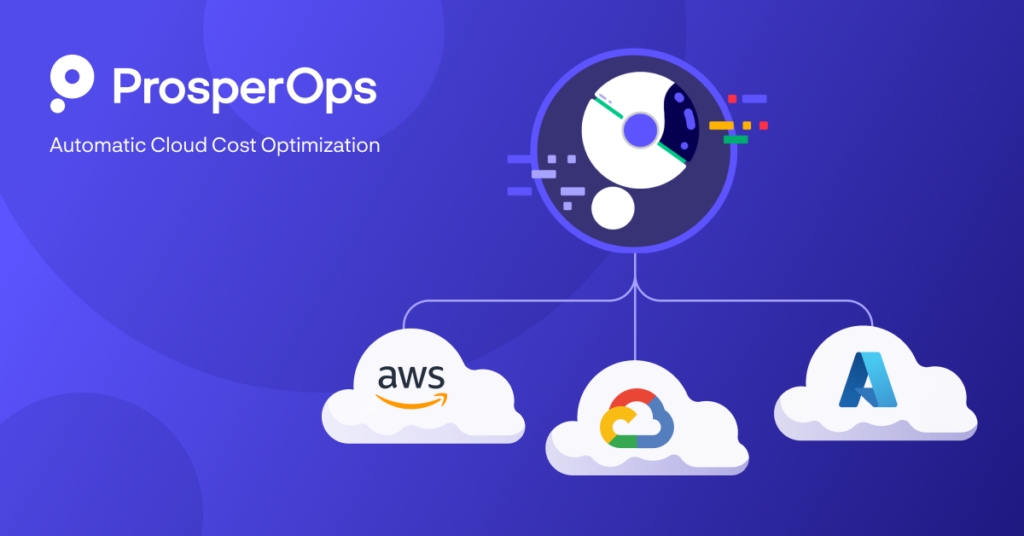Cloud adoption has brought agility and speed, but has also introduced new financial challenges. As usage scales, so does complexity: services multiply, environments grow fragmented, and spend becomes harder to predict or control. Many teams attempt to fix this with budget alerts or ad hoc savings efforts only to find themselves chasing cost spikes without a clear plan.
This usually happens because the foundation is missing. FinOps is not a quick fix. It is a discipline that requires cultural alignment, cross-functional collaboration, and consistent execution. Without these, even the best tools and optimization tactics fall short. Teams need clear ownership, shared accountability, and the right processes to make cost management sustainable.
In this blog, we outline the top FinOps strategies to help you get there. First, we look at the cultural principles that set up long-term success. Then, we explore the practical tactics that reduce cloud waste and increase efficiency across your cloud environments.
What Is FinOps?
FinOps is a collaborative financial management discipline that brings together engineering, finance, and business teams to drive value from cloud and technology investments. It provides a structured framework for managing variable cloud spending through real-time data, shared accountability, and cross-functional decision-making.
The goal isn’t just to control costs, but to align cloud usage with business priorities. FinOps enables better forecasting, improves visibility, and drives ownership across teams.
The FinOps Framework recently underwent significant updates in 2025, incorporating a new “Cloud+” maturity model. Instead of focusing solely on public cloud investments, the updated framework now guides the management of a broader range of technology expenses, including software-as-a-service (SaaS), data center operations, on-premise infrastructure, and AI-driven technologies.
How Can FinOps Strategies Help Reduce Cloud and Technology Costs?
By combining visibility, accountability, and financial ownership, FinOps helps organizations turn cloud cost management into an ongoing, collaborative process. Here’s how effective FinOps strategies support this:
Improve cost visibility across teams
FinOps helps teams access detailed, real-time cost data broken down by service, team, and project. This visibility ensures every department understands how their choices affect the overall bill.
When costs are transparent, teams can quickly identify inefficiencies like unused environments, idle virtual machines, or storage that no longer serves a purpose. Instead of waiting for end-of-month surprises, teams stay informed and in control every day.
Enable better decision-making
With timely cost data in hand, teams can make smarter technical and financial decisions. FinOps surfaces anomalies and trends early, which enables engineers to adjust before costs escalate and helps product teams evaluate trade-offs when launching new features. Every decision is guided by a clearer understanding of financial impact, which leads to more thoughtful infrastructure design and fewer cost surprises.
Optimize resource usage
One of the most direct benefits of FinOps is improved resource efficiency. Teams use actual usage data to identify oversized instances, underutilized services, or redundant environments.
FinOps strategies encourage rightsizing and support automated cleanup of low-value assets. They also promote more efficient deployment practices, ensuring that environments align with workload requirements rather than guesswork or overprovisioning.
Encourage cross-functional accountability
FinOps enables cost accountability across the organization, removing the disconnect between finance, engineering, and business teams.
When all functions share the same cost data and meet regularly to review it, they make better decisions together. Finance gains insight into the technical drivers behind spending, while engineering understands how budget constraints affect prioritization. This collaboration reduces friction, improves planning, and fosters a shared sense of ownership.
Establish cost accountability
FinOps promotes the use of tagging and cost allocation to assign every dollar of spend to the responsible team or owner. When cost data is connected to decision-makers, it creates natural accountability.
Showback models provide transparency by letting teams see their own impact. Chargeback introduces responsibility by assigning costs to specific departments. Both methods reinforce financial discipline and ensure cost considerations are part of every project from the start.
10 FinOps Strategies and Practices for Optimizing Costs
Below are 10 FinOps strategies and best practices you can implement right away to help you optimize your spending habits while extracting more value from all your technology investments.
1. Define and apply FinOps scopes to organize cost management
When adopting the FinOps Framework into your organization, the first step is to segment your technology spending into different scopes. The FinOps Technical Advisory Council (TAC) has identified these scopes as public cloud, software-as-a-service, and data center.
For each, identify associated cost drivers like pricing models, licensing agreements, and usage patterns. Use this structure to select the most relevant FinOps practices (like applying discount instruments in cloud, reducing license tiers in SaaS, or monitoring power usage in data centers) rather than defaulting to one-size-fits-all approaches.
2. Prioritize capabilities based on business strategy
After defining each of your FinOps scopes, assess which FinOps capabilities will drive the greatest impact for each. FinOps capabilities are the functional activities outlined in the framework and include different areas of focus, including cost allocation, budgeting, forecasting, resource optimization, and other key practices.
For each scope you identify, associate one or two capabilities that provide the most significant cost savings or process improvements for your business. For example, apply cost allocation and forecasting to your SaaS stack if budget predictability is a concern, or focus on usage optimization in your cloud scope if elasticity and scale are key drivers.
3. Focus on value-based decision-making
Make long-term business value a guiding principle when assessing all of your technology investments. This helps you avoid making quick removals or drastic cuts before considering the potential impact these decisions could have on your business operations.
Instead, focus on increasing your visibility over all business spending and associating it with specific business outcomes like compliance, innovation, faster time-to-market, or expanding globally. For instance, cutting test environments may save money but slow down product delivery.
Use cost versus value assessments (such as cost per transaction, cost per deployment, or cost-to-revenue ratio) to guide trade-offs, ensuring that optimizations support rather than hinder your broader goals.
4. Enable cost ownership across teams
Educate your engineering, finance, and operations teams on their technology spending habits and their impact on company budgets. Enabling shared visibility and cost ownership of company-wide technology is a core FinOps strategy that leads to a more financially disciplined business culture.
To achieve this, provide all your FinOps teams with monthly usage reports or maybe even real-time dashboards that break down spend by team, service, or project, and highlight optimization opportunities like idle VMs or duplicated tools. Encourage teams to set cost goals and review performance regularly to normalize financial accountability across roles.
5. Use accurate, timely, and accessible data
Create a centralized platform where you can collect and monitor all your FinOps data and metrics under one single source of truth. This helps you to verify the integrity of your technology spending data while also making it easier to share the information with relevant team members.
Leverage available tools and systems to automate data collection and create a regular schedule for generating departmental cost and usage reports. By sending out these reports on a consistent basis, you’ll make sure teams quickly detect issues, course-correct before invoices spike, and forecast with greater accuracy.
6. Optimize by scope, not just infrastructure type
Instead of applying general cloud savings tactics, optimize based on the nuances of each scope. Each scope has different levers, and treating them distinctly ensures you’re applying the right strategies to the right problems.
For public cloud, use rightsizing tools like AWS Compute Optimizer, Azure Advisor or Google Cloud Recommender; for SaaS, downgrade unused seats or consolidate tools with overlapping functionality; and for data centers, monitor underused servers or renegotiate support contracts.
7. Tailor personas and practices to each scope
Identify the key stakeholders, or “personas,” associated with each of your defined Scopes. FinOps groups personas into two categories — Core and Allied, and dictates how involved they are in your FinOps workloads.
Take the time to map the Personas for each Scope and create custom communication plans for each. For individuals directly responsible for spending decisions (Core personas), establish regular, detailed reporting and involve them directly in optimization strategies.
While supporting roles (Allied personas) may not have direct control over spending, it is still essential to keep them informed with relevant billing summaries. This helps to ensure that everyone has a good understanding of their department’s contribution to FinOps goals.
8. Embrace FinOps automation
FinOps automation helps teams act on cost-saving opportunities in real time without waiting for monthly billing cycles or relying on manual reviews. But automation isn’t one-size-fits-all, it varies across two key dimensions.
First is the level of automation: semi-automated systems surface recommendations for manual approval, partial automation triggers actions like rightsizing based on thresholds, and fully automated platforms handle everything from scaling to rate optimization autonomously.
Second is the function being automated: whether it’s visibility (dashboards and alerts), governance (tagging and policy enforcement), usage optimization (cleanup, scheduling), or rate optimization (automated commitment management). The right setup depends on your team’s FinOps maturity, tooling, and risk tolerance.
To explore these nuances in depth, check out our blog on FinOps automation.
9. Educate and train teams
Building a cost-aware culture starts with consistent, role-specific FinOps education. Move beyond one-time onboarding or ad-hoc sessions. Instead, establish a regular cadence for training through monthly webinars, quarterly workshops, and structured certification paths.
Engineering teams can benefit from hands-on labs covering tasks like instance rightsizing, Spot Instance usage, or tag enforcement. Finance teams should stay sharp on chargeback models, budgeting techniques, and cloud forecast analysis.
Encourage team members to pursue official FinOps certifications to deepen expertise and align everyone to a shared language and framework. Most importantly, make training continuous and measurable, tying it back to real cost outcomes and accountability across teams.
10. Acknowledge and motivate
Reinforce good spending habits among your teams by acknowledging individuals who actively seek and implement new cost-saving measures. Highlight any recent successes achieved in team meetings, or plan a special event to celebrate your employees’ contributions.
The important thing is to make these acknowledgements visible and authentic. When your teams see that the business appreciates their efforts, it helps to reinforce the importance of maintaining a healthy FinOps culture.
While the recent updates to the FinOps Framework have broadened its scope to encompass all types of technology investments, it is still essential to remember that cloud cost optimization remains a primary component of FinOps.
To learn specific tips on how your business can apply FinOps strategies to your cloud deployments, see: Cloud Cost Savings: 10 FinOps Tips for Optimizing Your Cloud Spend
Improve Your Cloud Cost Optimization Efforts With ProsperOps

With automation playing a crucial role in adopting a FinOps culture, having the right tools at hand can make a significant difference. This is where ProsperOps can help.
ProsperOps is a fully automated, multi-cloud cost optimization platform for AWS, Azure, and Google Cloud. It automates optimization efforts by adapting to your usage in real time, eliminating waste, maximizing savings, and ensuring every cloud dollar is spent effectively.
ProsperOps delivers cloud savings-as-a-service, automatically blending discount instruments to maximize your savings while lowering Commitment Lock-in Risk. Using our Autonomous Discount Management platform, we optimize the hyperscaler’s native discount instruments to reduce your cloud spend and help you achieve 45% ESR or more, placing you in the top 5% of FinOps teams.
In addition to autonomous rate optimization, ProsperOps now supports usage optimization through its resource scheduling product, ProsperOps Scheduler. Our customers using Autonomous Discount Management™ (ADM) can now automate resource state changes and integrate seamlessly with ProsperOps Scheduler to reduce waste and lower cloud spend.
Make the most of your cloud spend across AWS, Azure, and Google Cloud with ProsperOps. Schedule your free demo today!





